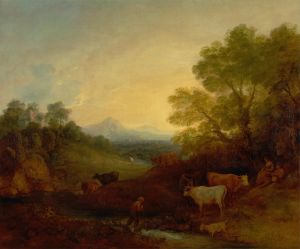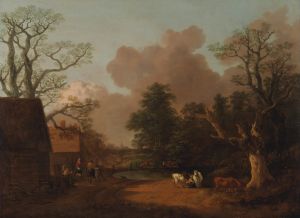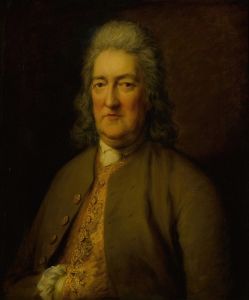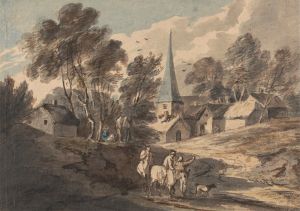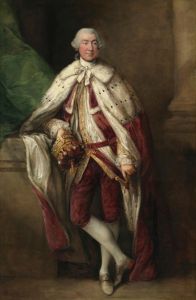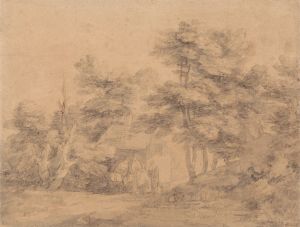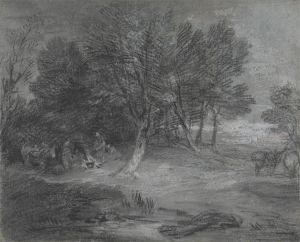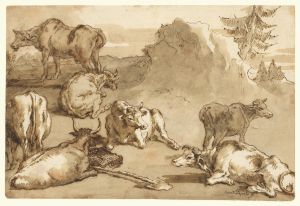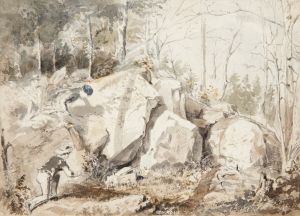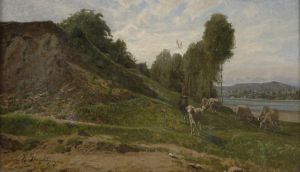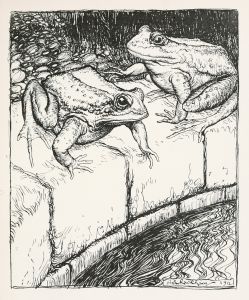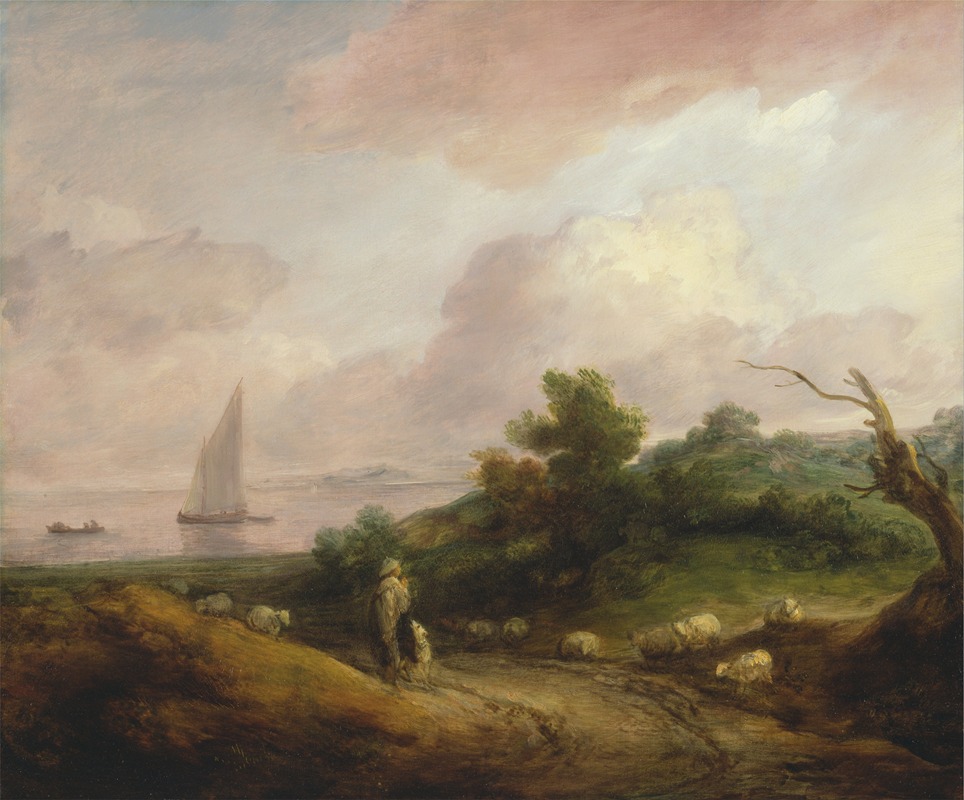
Coastal Landscape with a Shepherd and His Flock
A hand-painted replica of Thomas Gainsborough’s masterpiece Coastal Landscape with a Shepherd and His Flock, meticulously crafted by professional artists to capture the true essence of the original. Each piece is created with museum-quality canvas and rare mineral pigments, carefully painted by experienced artists with delicate brushstrokes and rich, layered colors to perfectly recreate the texture of the original artwork. Unlike machine-printed reproductions, this hand-painted version brings the painting to life, infused with the artist’s emotions and skill in every stroke. Whether for personal collection or home decoration, it instantly elevates the artistic atmosphere of any space.
"Coastal Landscape with a Shepherd and His Flock" is a painting by the renowned British artist Thomas Gainsborough. Gainsborough, born in 1727 in Sudbury, Suffolk, was a leading portrait and landscape painter of the 18th century. He is celebrated for his ability to capture the natural beauty of the English countryside and his innovative approach to landscape painting.
This particular painting, "Coastal Landscape with a Shepherd and His Flock," exemplifies Gainsborough's skill in depicting rural scenes with a sense of tranquility and harmony. The artwork features a shepherd tending to his flock of sheep against a backdrop of a coastal landscape. The composition is characterized by its soft, atmospheric use of color and light, which creates a serene and idyllic mood.
Gainsborough's landscapes often reflect his deep appreciation for nature and his desire to convey the beauty of the English countryside. In "Coastal Landscape with a Shepherd and His Flock," he employs a palette of earthy tones and subtle hues to evoke the natural environment. The painting's composition is carefully balanced, with the shepherd and his flock positioned in the foreground, leading the viewer's eye towards the expansive coastal vista in the background.
One of the notable aspects of Gainsborough's landscape paintings is his technique of using loose, expressive brushwork. This approach allows him to capture the essence of the scene without focusing on intricate details. In this painting, the brushstrokes are fluid and dynamic, contributing to the overall sense of movement and life within the landscape.
Gainsborough's landscapes were not merely topographical representations but rather idealized visions of nature. He often infused his works with a sense of nostalgia and romanticism, reflecting the pastoral ideal that was popular during his time. "Coastal Landscape with a Shepherd and His Flock" is no exception, as it portrays a harmonious relationship between humans and nature, a theme that resonated with the 18th-century audience.
Throughout his career, Gainsborough was influenced by the works of Dutch landscape painters, particularly the 17th-century artist Jacob van Ruisdael. This influence is evident in the way Gainsborough captures the atmospheric effects of light and weather in his landscapes. However, Gainsborough's style is distinctly his own, characterized by a more spontaneous and emotive approach.
In addition to his landscapes, Gainsborough was a highly successful portrait painter, with a clientele that included members of the British aristocracy and royalty. Despite his success in portraiture, Gainsborough often expressed a preference for landscape painting, which he considered his true passion.
"Coastal Landscape with a Shepherd and His Flock" is a testament to Gainsborough's mastery of the landscape genre. It reflects his ability to blend natural observation with artistic imagination, creating scenes that are both realistic and idealized. Today, Gainsborough's works are held in high esteem, and his landscapes continue to be celebrated for their beauty and artistic innovation.
The painting is part of the collection of the National Gallery in London, where it is appreciated by visitors from around the world. Gainsborough's legacy as one of Britain's greatest painters endures, and his landscapes remain a significant contribution to the history of art.





